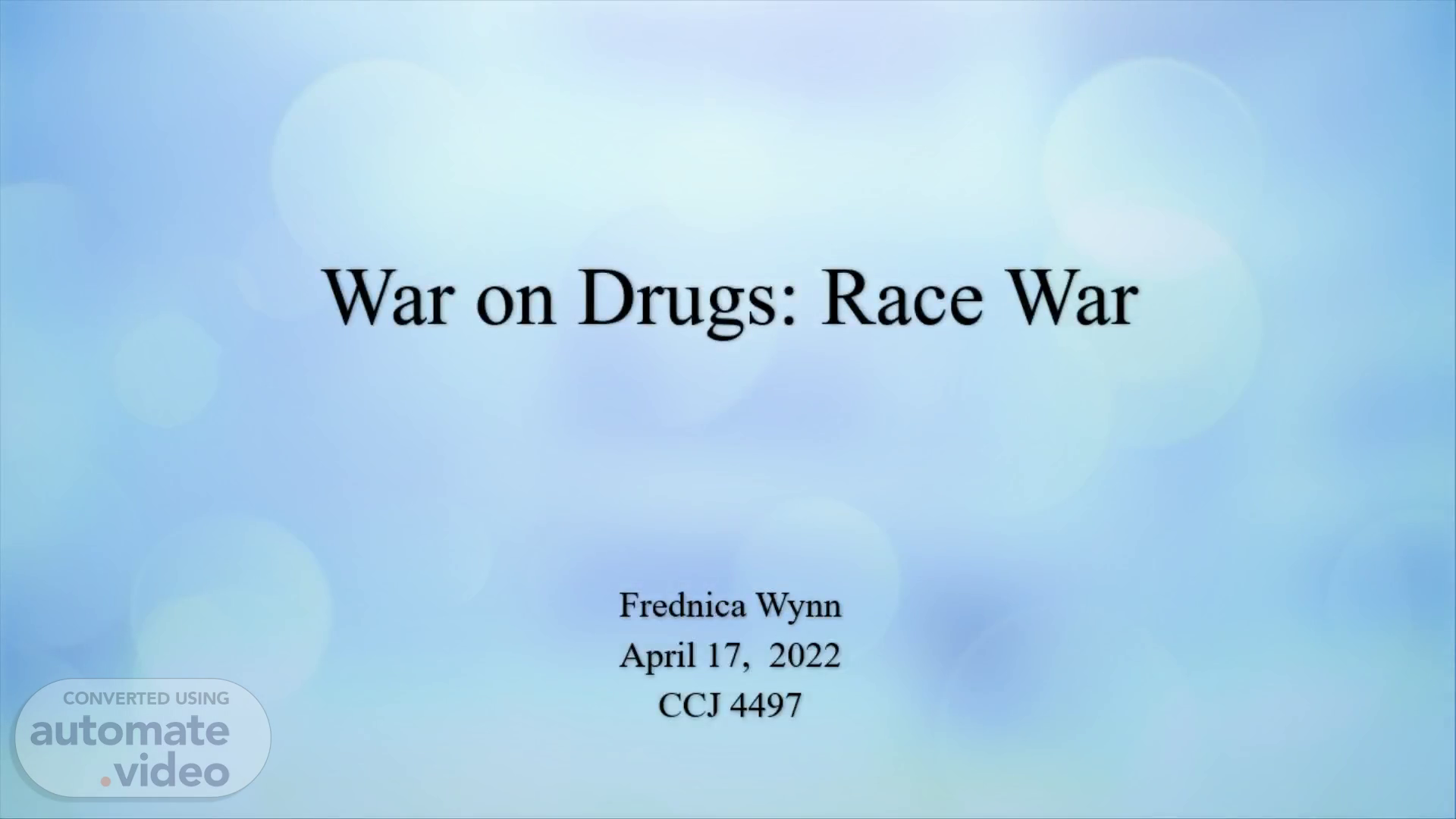
War on Drugs: Race War
Scene 1 (0s)
War on Drugs: Race War. Frednica Wynn April 17, 2022 CCJ 4497.
Scene 2 (2s)
History of War on Drugs. The war on drugs movement started in the 1970s and still continue on today. “War on Drugs” was coined on June 18, 1971 by President Richard Nixon. This was a global campaign with the intended efforts to stop the trading of drugs and consumption. Nixon stated that drugs were public enemy number one and devoted federal resources to the prevent more drug addiction and rehabilitation for those who are already addicted..
Scene 3 (1m 3s)
Incarceration Rates. A picture containing diagram Description automatically generated.
Scene 4 (2m 20s)
Drugs in the communities. Annually police officers make more than 1.5 million drug-related arrest. Black people are negatively impacted by drug enforcement laws and policies. This policy led to the incarceration and death of numerous black people. Drug abuse led to an increasing overdose death toll in the United States. Crack cocaine infiltrated black communities creating an intensive addiction to the drug. Crack cocaine entering these communities created more violence and crime..
Scene 5 (3m 57s)
Racial Disparities. Chart Description automatically generated with medium confidence.
Scene 6 (5m 12s)
Moving to harder drugs. A screenshot of a cell phone Description automatically generated.
Scene 7 (7m 7s)
Funding Allocated to War on Drugs. In the past, the U.S. government spent more than $1 trillion committing to the cause of ending the use and distribution of drugs. This costed taxpayers more than $51 billion annually. Under the Andean Counterdrug Initiative the U.S. spent $2.8 billion and after financing the Department of Defense counternarcotic account the total was $4.5 billion. Previous administrations used billions of dollars on the war on drugs, yet the drug epidemic continued despite their efforts. Under the Reagan administration the drug budget was cut by $1 billion, and the cuts were made to the arears of education, treatment, and rehabilitation. Under new administration, the U.S. government has a $30 million dollar fund for alternative approaches for drug abusers. The U.S. new drug policies are grounded in the health and social justice of their citizens..
Scene 8 (8m 27s)
Later Presidents policies created to combat drugs.
Scene 9 (10m 25s)
U.S Citizens change of opinion. Opinions of American citizens are changing from drugs being public enemy number one and incarceration is the best way to deal with this enemy to helping drug abusers through rehabilitation and legalizing substances that were once viewed as the destruction of society. There is an increase of willingness to try alternative approaches to the war on drugs. 65 percent of voters are supporting to end the war on drugs and 66 percent support eliminating all criminal penalties for drug possession. Although some Americans have changed their minds, half of them remain loyal to the "war on drugs" and continue their support of the cause. Drug addiction is being viewed as an illness rather than a detrimental cause to society..
Scene 10 (12m 52s)
Recommendation to better War on Drugs. The DPA, drug policy alliance, gives individuals the opportunity for rehabilitation. I believe that more rehabilitation centers need to open and be free of cost because the best rehab centers in the United States are expensive and most individuals and their families are unable to pay to get professional help for their loved ones. Moving away from methods that were once used is a great start to improving the quality of life for drug abusers and addicts..